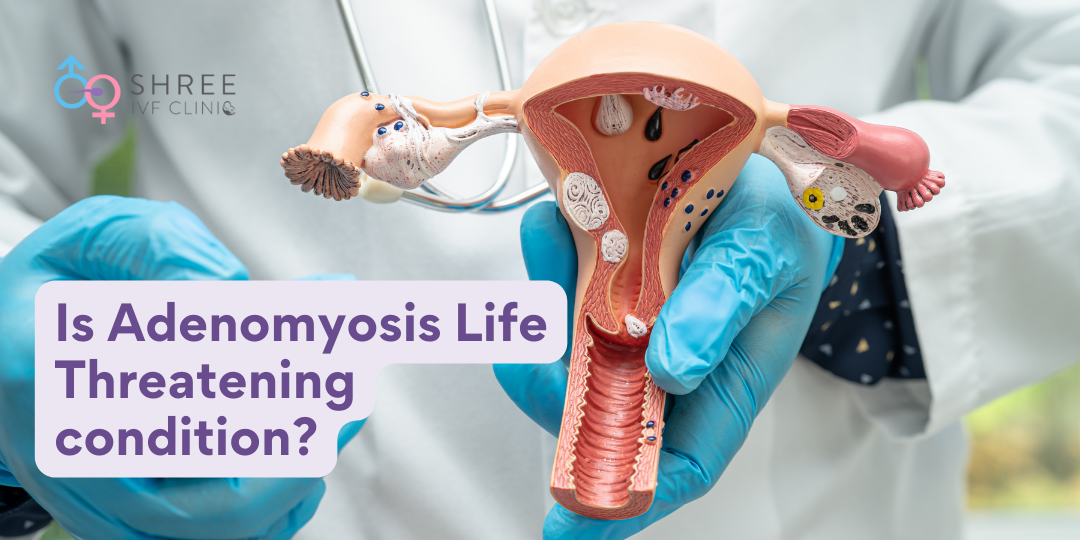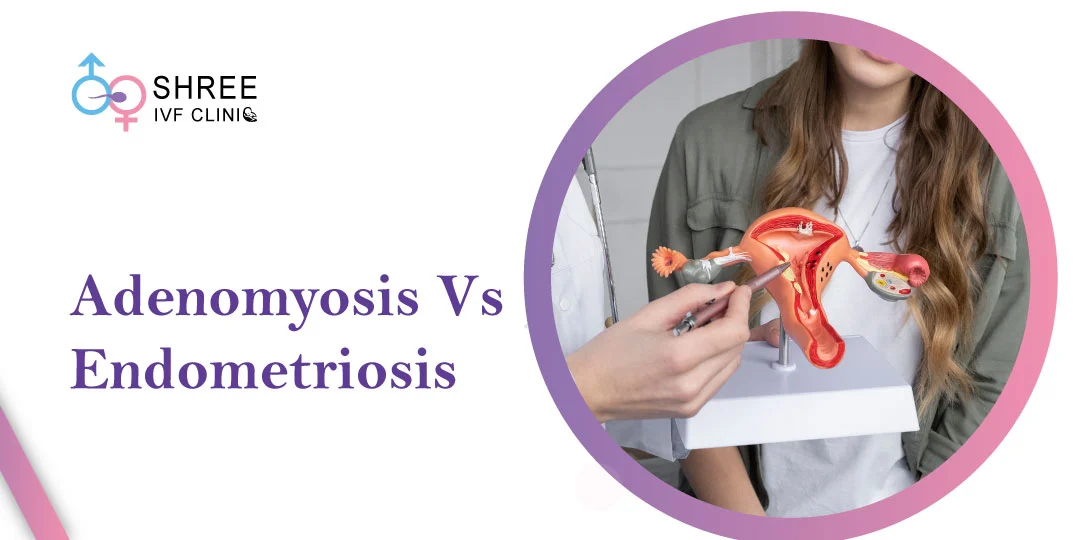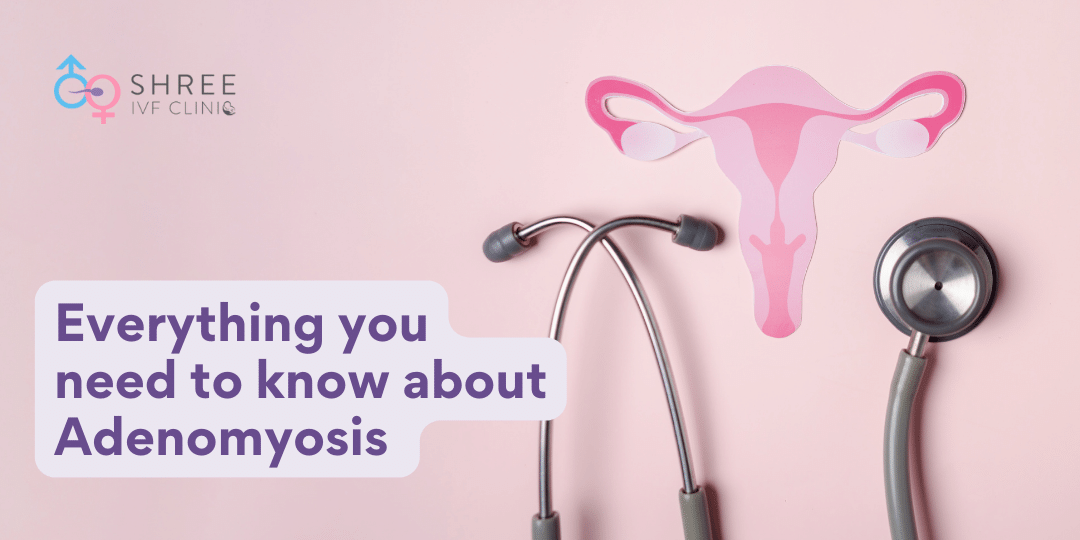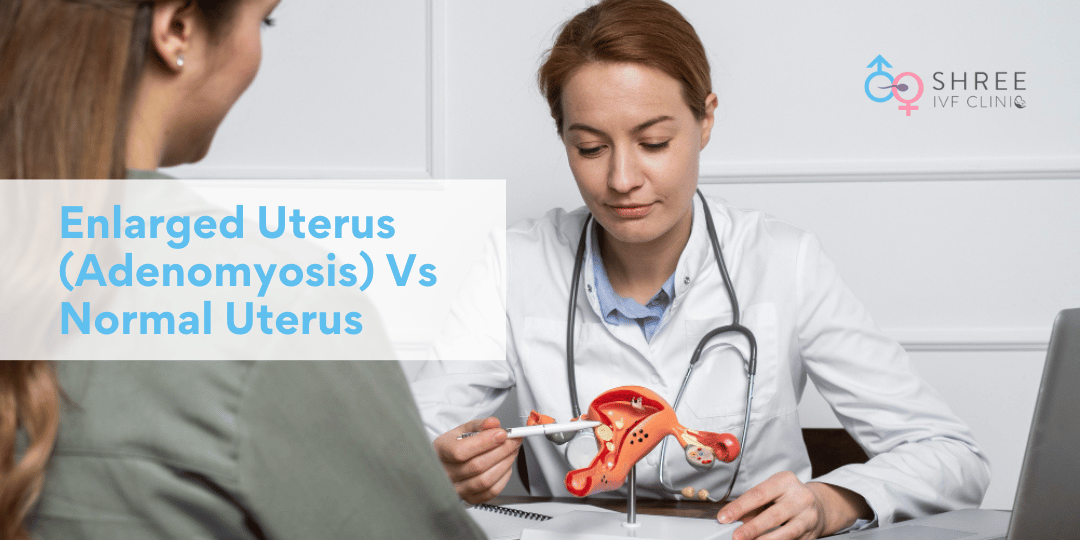Adenomyosis: Is It a Dangerous Condition?
UPDATED ON 18 DEC. 2023
Adenomyosis is a medical condition that, while not as widely recognized as other gynaecological disorders, is quite common. According to the World Endometriosis Research Foundation, it may affect as many as 1 in 10 women. Despite its prevalence, adenomyosis often remains shrouded in mystery for many people, leading to misconceptions, fear, and anxiety. I aim to unravel the complexities of adenomyosis, providing comprehensive insights into its potential dangers, complications, and management strategies.

AUTHOR
Dr Jay Mehta
Scientific Director & IVF Specialist with 10+ years of experience
CONDITION
GET IN TOUCH ON
Understanding Adenomyosis & Its Prevalence
Adenomyosis is a gynaecological condition that occurs when the endometrium, the inner lining of the uterus, penetrates the muscle wall of the uterus known as the myometrium. This intrusion can cause the uterus to enlarge and often results in painful, heavy periods. The condition’s name comes from “adenomyo,” meaning glandular tissue within muscle, and “-osis,” indicating a disorder or abnormal condition.
While adenomyosis predominantly affects women in their 40s and 50s who have had children, it’s not exclusive to this demographic. Younger women and those who have never been pregnant can also develop adenomyosis. The exact cause of adenomyosis is still unknown, but factors such as childbirth and uterine surgery are thought to contribute to its development. Hormonal factors may also play a role, as estrogen and progesterone have been linked to the growth of adenomyosis.
Is Adenomyosis a Life Threatening Condition?
While the condition can cause significant discomfort and distress, it is not directly life-threatening. However, if left untreated, the symptoms of adenomyosis can lead to other health complications such as anemia due to heavy menstrual bleeding, or mental health issues related to chronic pain or fertility problems.
Read more : Is adenomyosis a serious condition?
Complications Associated with Adenomyosis
In some cases, adenomyosis may affect fertility. While many women with adenomyosis can conceive and carry a pregnancy to term, some studies suggest that the condition could potentially impact fertility by altering the uterine environment. If you’re planning to become pregnant and have been diagnosed with adenomyosis, it’s crucial to discuss this with your gynaecologist or with us.
The emotional toll of dealing with adenomyosis can also be significant. The chronic pain and heavy bleeding associated with the condition can negatively affect a woman’s mental health, potentially leading to conditions like anxiety or depression.
Diagnosing Adenomyosis Can Be Challenging.
Diagnosing adenomyosis can be challenging due to its similarity with other conditions such as endometriosis and fibroids. These conditions can present with similar symptoms, making it difficult for gynaecologist to differentiate between them based on symptoms alone.
Typically, the diagnosis of adenomyosis involves a combination of clinical examination, imaging studies, and sometimes surgical assessment. A pelvic exam may reveal an enlarged, tender uterus. Imaging tests such as ultrasound or MRI can provide more detailed information about the condition of the uterus. However, the most definitive diagnosis of adenomyosis is usually made after a hysterectomy when a pathologist can examine the uterus under a microscope.

4,790+
379K+
” Every individual and couple’s journey is unique, and
finding the right solutions tailored to their specific
circumstances can make all the difference “
Managing Adenomyosis: A Multifaceted Treatment Approach
The management of adenomyosis is primarily aimed at reducing symptoms and improving quality of life. This often involves a multifaceted approach tailored to the severity of the symptoms and individual patient needs.
Nonsteroidal anti-inflammatory drugs (NSAIDs) are often used to manage pain associated with adenomyosis. These medications can help reduce inflammation and alleviate menstrual cramps. Hormonal therapies such as oral contraceptives or progesterone injections can also be used to control heavy menstrual bleeding.
Lifestyle changes, including regular exercise and a balanced diet, can also help manage symptoms. Some research suggests that certain dietary changes, such as reducing intake of caffeine and alcohol, may help alleviate menstrual pain.
In severe cases, surgical options may be considered. This could involve a hysterectomy, which is the removal of the uterus and is the only definitive cure for adenomyosis. Another less invasive option is uterine artery embolization. This procedure involves blocking the arteries that supply blood to the adenomyosis, which can reduce symptoms without removing the uterus.
Coping with Adenomyosis
Living with adenomyosis can be challenging, but it’s important to remember that you’re not alone. Connecting with others who understand your experience can provide invaluable emotional support. Online communities, local support groups, and counselling services can all offer this connection.
Communication with the gynaecologist is also crucial. It’s important to feel comfortable discussing your symptoms, concerns, and treatment options with your oncologist. Remember, they are there to help you navigate this journey.
Conclusion
In Conclusion, Adenomyosis, while not life-threatening, can significantly affect a woman’s quality of life. However, with early detection, effective management, and the right support, women with adenomyosis can lead healthy, fulfilling lives.
If you suspect you have adenomyosis, seek medical advice promptly. Early intervention can alleviate symptoms and improve your quality of life. Remember, you’re not alone in this journey. With the right information, support, and care, you can manage adenomyosis effectively and live a full, vibrant life.
AUTHOR
Dr Jay Mehta
Scientific Director & IVF Specialist with 10+ years of experience
CONDITION
CALL US 24/7 FOR ANY HELP
GET IN TOUCH ON
Share Article on
Recommended Reading
Difference Between Adenomyosis and Endometriosis
Endometriosis causes tissue to grow outside the uterus, while adenomyosis leads to growth within the uterine muscle
What Causes Adenomyosis? Guide to Causes, Diagnosis & Treatments Available
Demystifing Adenomyosis, providing an in-depth overview of its causes, diagnosis, and treatment options through this article. learn more.
Understanding Enlarged Uterus vs Normal Uterus
This article helps you understand the difference between an enlarged uterus vs normal normal-sized along with its signs & symptoms




